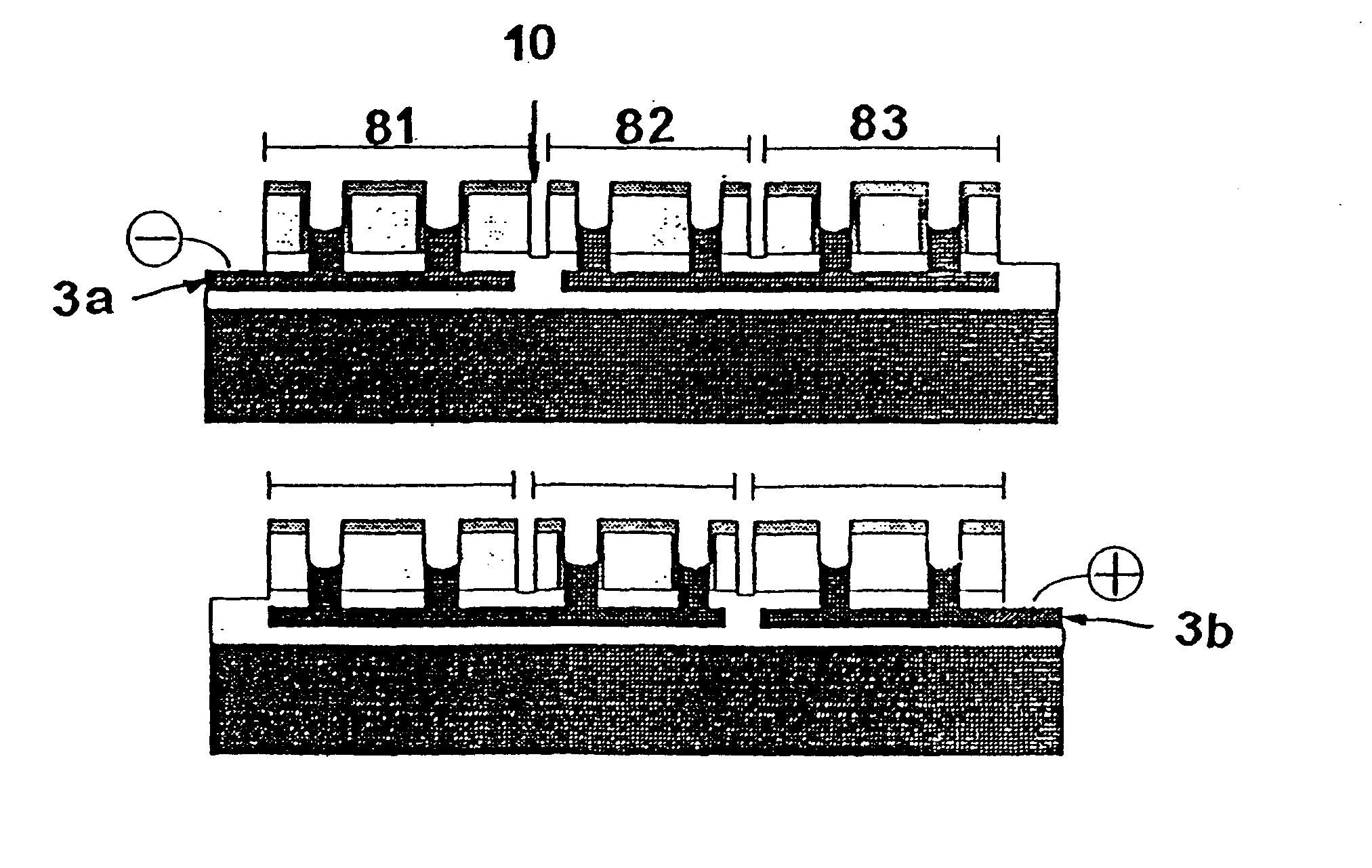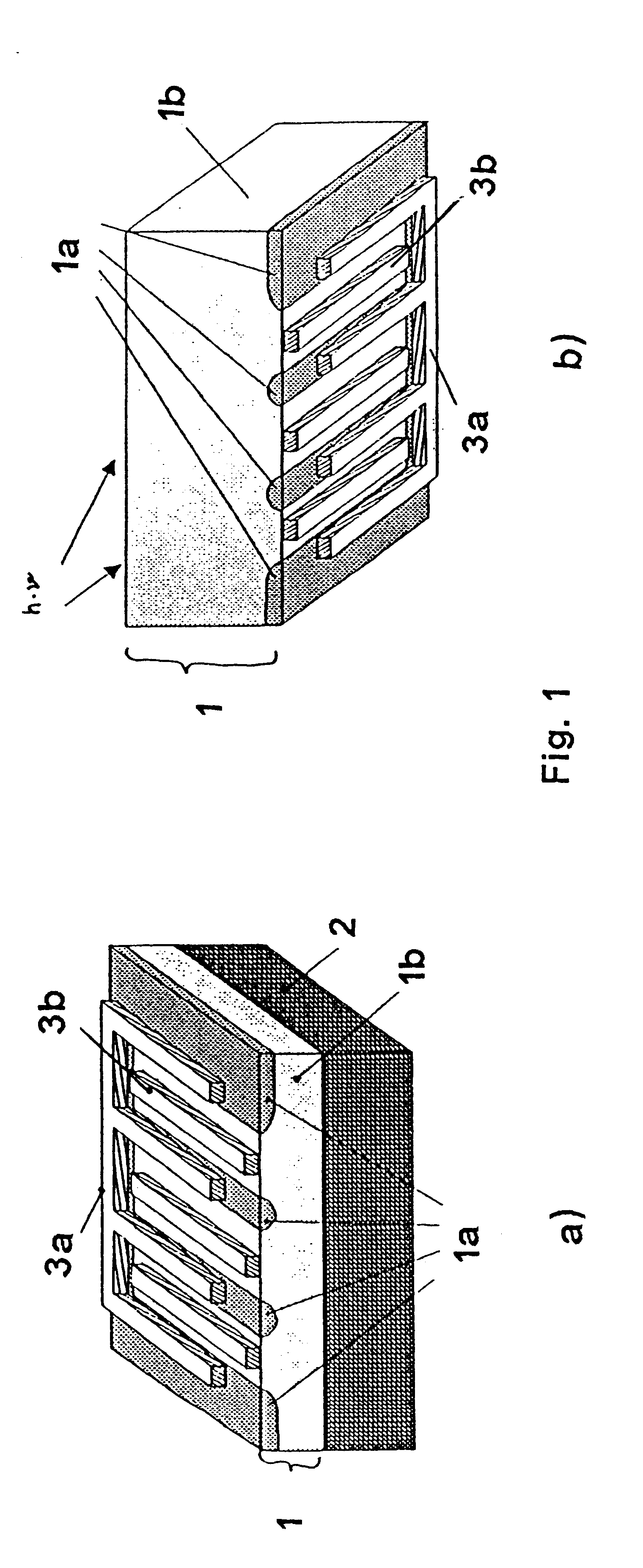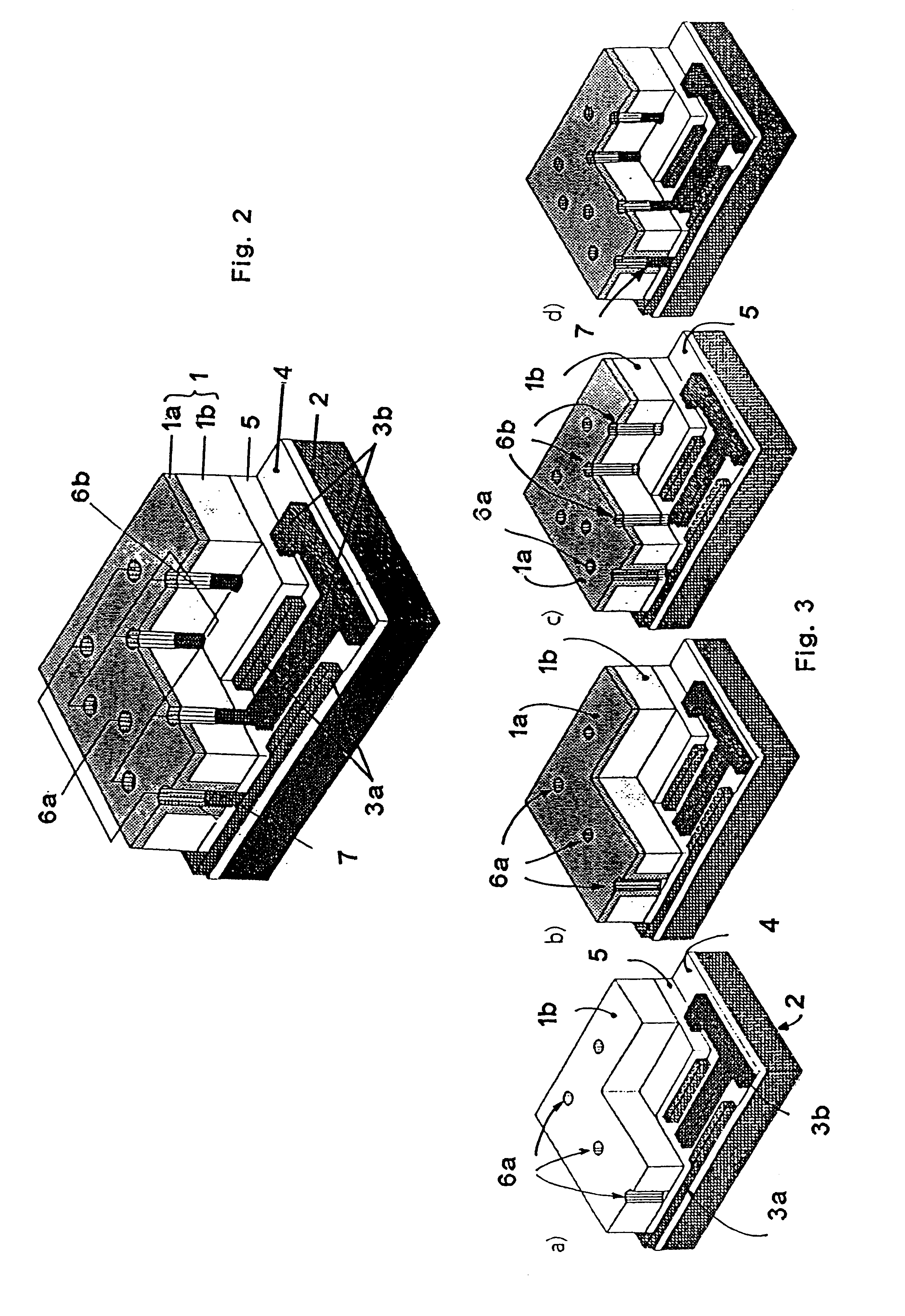Thin-film solar array system and method for producing the same
a solar array and thin film technology, applied in photovoltaic energy generation, diodes, electrical equipment, etc., can solve the problems of only being able to realize this single-side grid, not conductive, and limited ewt cell to solar cells made of silicon disks
- Summary
- Abstract
- Description
- Claims
- Application Information
AI Technical Summary
Problems solved by technology
Method used
Image
Examples
Embodiment Construction
FIG. 2 shows the principle setup of the invented back-contact thin-layer solar cell (BC-TFC, Engl. Back-contact thin-layer) of the present invention.
Before deposition of the active solar cell layer 1, strip conductors 3a and 3b made of metal or other conductive materials, such as e.g. silicides (e.g. TiSi.sub.2) are directly applied to a carrier substrate 2 or to lower insulation layer 4. These strip conductors are covered with an upper electrical insulation layer 5 (for example, made of nitrides and / or oxides and / or carbides). In addition to electric insulation, the purpose of this layer 5 is to encapsulate the metal of the contact electrodes 3a and 3b, because it can melt in the subsequent temperature steps (e.g. during deposition of the active semiconductor layer or during formation of an emitter). Encapsulation ensures that the metal neither runs nor that large amounts of the metal diffuse through the insulation layer and adversely effect the quality of the active layer in this ...
PUM
 Login to View More
Login to View More Abstract
Description
Claims
Application Information
 Login to View More
Login to View More - R&D
- Intellectual Property
- Life Sciences
- Materials
- Tech Scout
- Unparalleled Data Quality
- Higher Quality Content
- 60% Fewer Hallucinations
Browse by: Latest US Patents, China's latest patents, Technical Efficacy Thesaurus, Application Domain, Technology Topic, Popular Technical Reports.
© 2025 PatSnap. All rights reserved.Legal|Privacy policy|Modern Slavery Act Transparency Statement|Sitemap|About US| Contact US: help@patsnap.com



